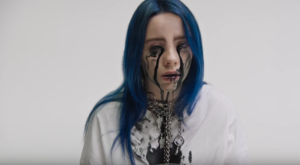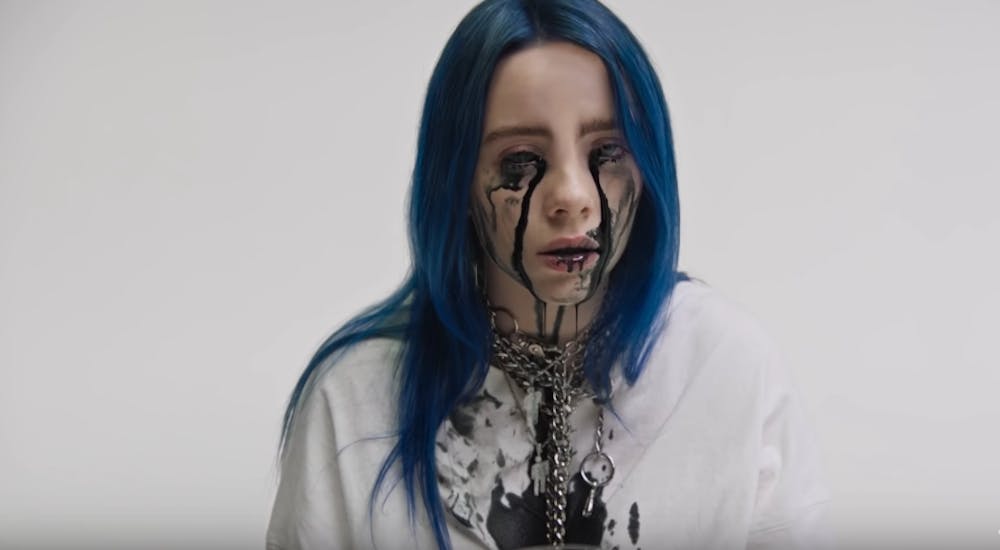By James Mercadante
Staff Writer

It’s easy to lose faith in pop music as new artists recycle old chord progressions and duplicate lyrical content. But once in a while, there’s an artist that raises her middle finger to what traditionally sells and refuses to conform — these days, that artist is Billie Eilish.
On March 29, the 17-year-old released her highly-anticipated debut album, “WHEN WE ALL FALL ASLEEP, WHERE DO WE GO?” The LP consists of 14 tracks, both written and produced by Billie Eilish and her 21-year-old brother, Finneas, in their childhood home in Los Angeles.
On the night of her album release, Eilish posted the album cover on her Instagram and pleaded with her fans writing, “This album is the world to me, so please take care of it.”
Her body of work demands to be heard and felt.
The album plays out like a soundtrack to a cinematic masterpiece, as the tracklist order progressively tells a story. It is the soundtrack to your dreams consolidated into one LP.
Each song sonically emulates various dreams that range from sinister nightmares to velvety dreams with music boxes ringing in your ears. The album drags listeners to places that Eilish in visits in her sleep.
One captivating aspect of the young artist is her hushed, soft vocals that she uses to gracefully sing melodious lyrics that are tougher to digest. Her voice makes listeners feel like they are floating above water or sinking quickly below it.
Eilish is more than capable of giving audiences goosebumps — her voice and production verbally massages any ache that possesses body or spirit.
“Xanny” is a perfect example of this effect. The lyrics detail her opposition to resort to drugs like Xanax in order “to feel better.” Her vocals sway back and forth, taking control of viewers and asserting Eilish’s narrative.
The song opens with an intense tone, transitions to a peaceful piano arrangement and concludes with a cappella vocals. Eilish’s voice mimicks the effects of drug use, Xanax in particular, in her attempts at relieving your anxiety and displaying how true serenity can come in many forms, especially in her music.
It is not just her vocals, but the transparency in Eilish’s lyrics that render her work as unequivocally raw. At times, she crosses dangerous territory when expressing certain thoughts, such as contemplating death by suicide.
The album title, “WHEN WE ALL FALL ASLEEP, WHERE DO WE GO?” could translate literally to the vividity of her dreams or could be an allegory of life after death. She makes several biblical references to heaven and hell, especially in “All the Good Girls Go to Hell,” but also through burials in “Bury a Friend,” where her own worst enemy — herself.
“Listen Before I Go” is a piano ballad that depicts Eilish’s last thoughts before she leaves her life on Earth. She adds sound effects such as rain, wind, voices below her and ambulances, which all create an image of her standing on a rooftop and contemplating her options.
Eilish sings, “Sorry there’s no way out but down,” which offers no resolution or hope for her listeners. This certainly has the ability to destruct her listener’s perception of reality and artistry. She does not offer any ounce of hope, which is unbelievably disturbing and can leave audiences unsettled.
Besides that particular song, her lyrics are overall mature, especially from such a young artist. This is what makes this album so special and thought-provoking.
Her concluding track on the LP, “Goodbye,” steals one lyric from every other song and sings the album backward, as if she is pulling you back to reality. Eilish crafted her album to be a dream that her listeners most definitely do not want to wake up from.







